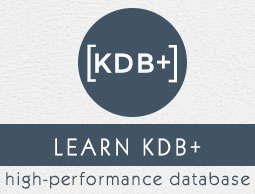
- KDB+ Tutorial
- KDB+ - Home
- KDB+ Architecture
- KDB+ - Overview
- KDB+ - Architecture
- Q Programming Language
- Q Programming Language
- Q Language - Type Casting
- Q Language - Temporal Data
- Q Language - Lists
- Q Language - Indexing
- Q Language - Dictionaries
- Q Language - Table
- Q Language - Verb & Adverbs
- Q Language - Joins
- Q Language - Functions
- Q Language - Built-in Functions
- Q Language - Queries
- Q - Inter-Process Communication
- Q - Message Handler (.Z Library)
- Q Advanced Topics
- Q Language - Attributes
- Q Language - Functional Queries
- Q Language - Table Arithmetic
- Q Language - Tables on Disk
- Q Language - Maintenance Functions
- KDB+ Useful Resources
- KDB+ - Quick Guide
- KDB+ - Useful Resources
- KDB+ - Discussion
Q Language - Lists
Lists are the basic building blocks of q language, so a thorough understanding of lists is very important. A list is simply an ordered collection of atoms (atomic elements) and other lists (group of one or more atoms).
Types of List
A general list encloses its items within matching parentheses and separates them with semicolons. For example −
(9;8;7) or ("a"; "b"; "c") or (-10.0; 3.1415e; `abcd; "r")
If a list comprises of atoms of same type, it is known as a uniform list. Else, it is known as a general list (mixed type).
Count
We can obtain the number of items in a list through its count.
q)l1:(-10.0;3.1415e;`abcd;"r") / Assigning variable name to general list q)count l1 / Calculating number of items in the list l1 4
Examples of simple List
q)h:(1h;2h;255h) / Simple Integer List
q)h
1 2 255h
q)f:(123.4567;9876.543;98.7) / Simple Floating Point List
q)f
123.4567 9876.543 98.7
q)b:(0b;1b;0b;1b;1b) / Simple Binary Lists
q)b
01011b
q)symbols:(`Life;`Is;`Beautiful) / Simple Symbols List
q)symbols
`Life`Is`Beautiful
q)chars:("h";"e";"l";"l";"o";" ";"w";"o";"r";"l";"d")
/ Simple char lists and Strings.
q)chars
"hello world"
**Note − A simple list of char is called a string.
A list contains atoms or lists. To create a single item list, we use −
q)singleton:enlist 42 q)singleton ,42
To distinguish between an atom and the equivalent singleton, examine the sign of their type.
q)signum type 42 -1i q)signum type enlist 42 1i
Advertisements